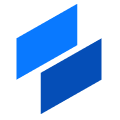[Global Research Trends] 10. Top 10 Countries on Microneedle Research Publications (2014-2024)
![[Global Research Trends] 10. Top 10 Countries on Microneedle Research Publications (2014-2024)](/content/images/size/w1200/2024/11/Scinapse-Trends_10.png)
/ Scinapse Trends Series #10
‘Scinapse Trends’ is updated bi-weekly on Mondays with research trends to facilitate the researcher's journey. Begin your week with cutting-edge research trends and insights from industry experts at Scinapse! 😊
What are Microneedles (MNs) ?
Microneedles, as the name suggests, are "microscopic needles" that are applied to the skin to effectively deliver drugs or vaccines into the body. They are thinner and smaller than traditional needles, causing less pain and offering easier usability. This technology is not only designed for smooth drug delivery but is also applied in various fields, such as treating skin diseases, enhancing the absorption of cosmetic ingredients, and monitoring blood sugar levels.
This microneedle technology is particularly significant because it is minimally invasive and safe, leaving fewer marks and causing little to no pain. It enhances drug and vaccine delivery efficiency due to high absorption rates, allows for self-administration in a convenient patch form, and, most importantly, offers a cost-saving alternative to conventional injection methods.
Why Is Microneedle Research Important?
Let's understand what makes studying the evolution of microneedle research so significant?
- Expanding Vaccine Accessibility
Microneedle technology enables vaccine delivery without the need for cold storage, making it possible to increase global vaccination rates, especially in underserved regions. - Developing Innovative Therapies
Microneedles allow the effective delivery of therapeutics that are challenging to administer through traditional methods, such as proteins, antibodies, and RNA-based treatments. - Addressing Global Health Challenges
With minimal pain and enhanced safety, microneedles improve patient compliance and reduce the burden on healthcare systems, particularly benefiting chronic disease management.
Microneedles are regarded as a transformative technology in the medical and biotechnology sectors, offering innovative and efficient solutions for disease prevention and treatment. Their potential to revolutionize healthcare makes them a pivotal focus of modern research.
In this edition of Scinapse Trends, we delve into a decade of breakthroughs and trends in microneedle research, uncovering their profound implications for sustainable healthcare and industrial advancements.
Top 10 Countries for Microneedles Ranked by Publications

Over the past decade, the top five countries leading in research on microneedles are China, the United States, South Korea, India, and the United Kingdom.
China and the United States take the first and second spots with remarkable research output, boasting 1,734 and 1,097 publications, respectively. South Korea ranks third with 468 publications, followed by India in fourth place and the United Kingdom in fifth with 385 publications.
Other notable contributors include Japan with 300 publications, Egypt with 187, Canada with 113, Iran with 111, and Indonesia with 91, rounding out the top 10.
Focused Research on Different Types of Microneedles
Among the 6,737 publications on microneedles over the past decade, approximately 34.5% (2,323 publications) focus on the five most prominent types of microneedles:
- Dissolving
- Hollow
- Solid
- Coated
- Hydrogel-forming
Breaking down the research distribution within this group, we see the following publication counts:
- Dissolving: 739
- Hollow: 343
- Solid: 331
- Coated: 316
- Hydrogel-forming: 155
If we calculate the pie graph as a ratio of the number of studies with the keyword / the sum of studies containing the keyword (1884), it is as follows.

When calculating the proportions based on the total 1,884 publications featuring these specific keywords, dissolving microneedles emerges as the dominant area of focus, while the other four types maintain relatively similar shares.
Dissolving microneedles have seen significant growth, rising from 23% of total publications in 2014 to 50% in 2020. In contrast, research on coated microneedles has declined, dropping from 19% in 2014 to just 6% by 2023.

Despite these shifts, all five categories demonstrate an upward trend in annual citations, indicating consistent growth in research volume and interest across the field.
Note - The data for 2024 is partially updated, and none of the data guarantees the accuracy of the information included in this work.
How Can I Extract Research Insights From Scinapse?
Scinapse's Research Intelligence Advanced Filter allows users to add and edit various filters according to their research objectives. This enables not only searching for the right paper but also gaining insights into advanced research trends.
To add a Field Trend,
enter each relevant “Keyword” into the filter (remember to use quotation marks around each keyword).
For any additional keywords you wish to search, input them into the extra filter to narrow down the results.

How Have Microneedles Evolved Over the Past Years?
To summarize, how has research on microneedle patches evolved over the past 3, 5, and 7 years? Recent studies highlight their transformative potential in drug delivery, biosensing, and healthcare applications like diabetes, wound healing, contraception, and vaccination.
Over the past 7 years, research has focused on developing microneedle patches for drug delivery, vaccination, and biomarker quantification, showcasing advancements in controlled release and transdermal technologies. In the past 5 years, efforts have centered on advanced microneedle patches for targeted drug delivery and biosensing, applied to areas like contraception, diabetes, psoriasis, biomarker detection, wound care, and diagnostics.
Finally, for the last 3 years, research has shifted toward cutting-edge applications like protein biomarker detection, diabetic wound care, transdermal drug delivery, and diabetes treatment.

The “AI Research Insights✨” shows how research has been conducted and progressed within your search criteria over the last 3, 5, or 7 years.
👉🏻If you need more information from Research Intelligence, Try it Now!
👇🏻Need more insights? Book a demo today!
/ Data source - Scinapse
Topic advised by RI Team from [PT09] Microneedle Research Trends
/ Written by Geehee Nahm
- Content Strategist specializing in SaaS industries
For Previous Scinapse Trends 🔽




![[Global Research Trends] 9. Top 10 Countries on FOWT Research Publications and Authors' Normalized h-Index (2014-2024)](/content/images/size/w720/2024/11/Scinapse-Trends_9--1-.png)
![[Global Research Trends] 8. Leading Companies and Countries with Top Publications on Drug Approval Post-Covid (2021-2024)](/content/images/size/w720/2024/10/hand-medical-glove-holding-vaccine-vial-1.jpg)
Comments ()